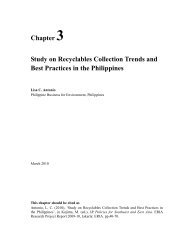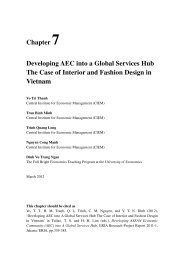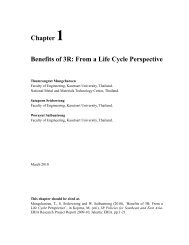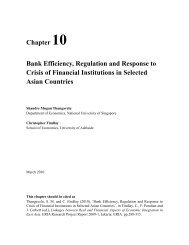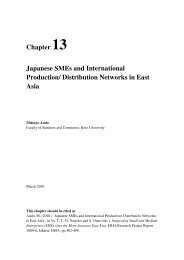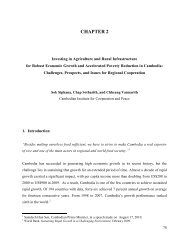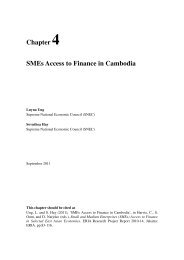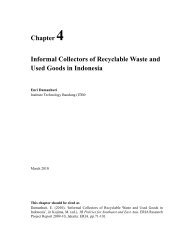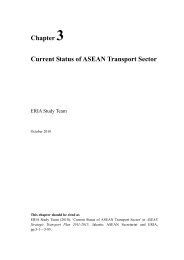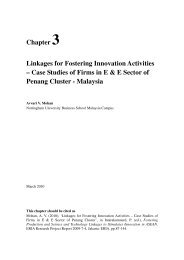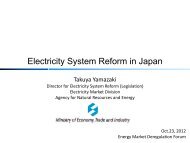Chapter 1 CAMBODIAN SMALL AND MEDIUM SIZED ... - ERIA
Chapter 1 CAMBODIAN SMALL AND MEDIUM SIZED ... - ERIA
Chapter 1 CAMBODIAN SMALL AND MEDIUM SIZED ... - ERIA
- No tags were found...
Create successful ePaper yourself
Turn your PDF publications into a flip-book with our unique Google optimized e-Paper software.
nearly 97 percent of the country’s manufacturing workers were unskilled and less than aquarter of Cambodian firms provided formal training to workers. 23Even a basic education is unavailable to many Khmers. There is a majorshortage of qualified teachers and less than three percent of the country’s GDP is spenton public education. 24 Although primary and junior high school education is officiallyfree and compulsory, low official wages lead to teachers demanding fees from students,and families often remove children from school to help harvest and prepare family plotsof land.For students there is little motivation to study, as well-paying jobs are usuallygiven based on family contacts, not ability.3. THEORIES OF DEVELOPMENTVery generally theories of Asian development can be classified into two groups. On onehand are accumulation theories, where the accumulation of physical capital andupgrading technology is vital for economic development. On the other hand areassimilation theories, where factors such as entrepreneurship, innovation and the abilityto learn and adopt technology are of crucial importance for enterprise and economicdevelopment. The relevant importance of accumulation verses assimilation is debated,but it is obvious that some mix of both is required for nations and enterprises to develop.Empirically the high rates of growth in Asian economies has been characterised by highrates of growth in both physical and human capital.Many of the following barriers and recommendations reflect the importance ofphysical and human capital. Providing a level playing field where Cambodian SMEscan access and upgrade capital would go a long way towards enabling these enterprisesto develop.The Small and Medium Industry Development Corporation of Malaysia(SMIDEC) have identified four stages of enterprise development. During the initialstage factors such as access to an adequate workforce and raw materials, and10



